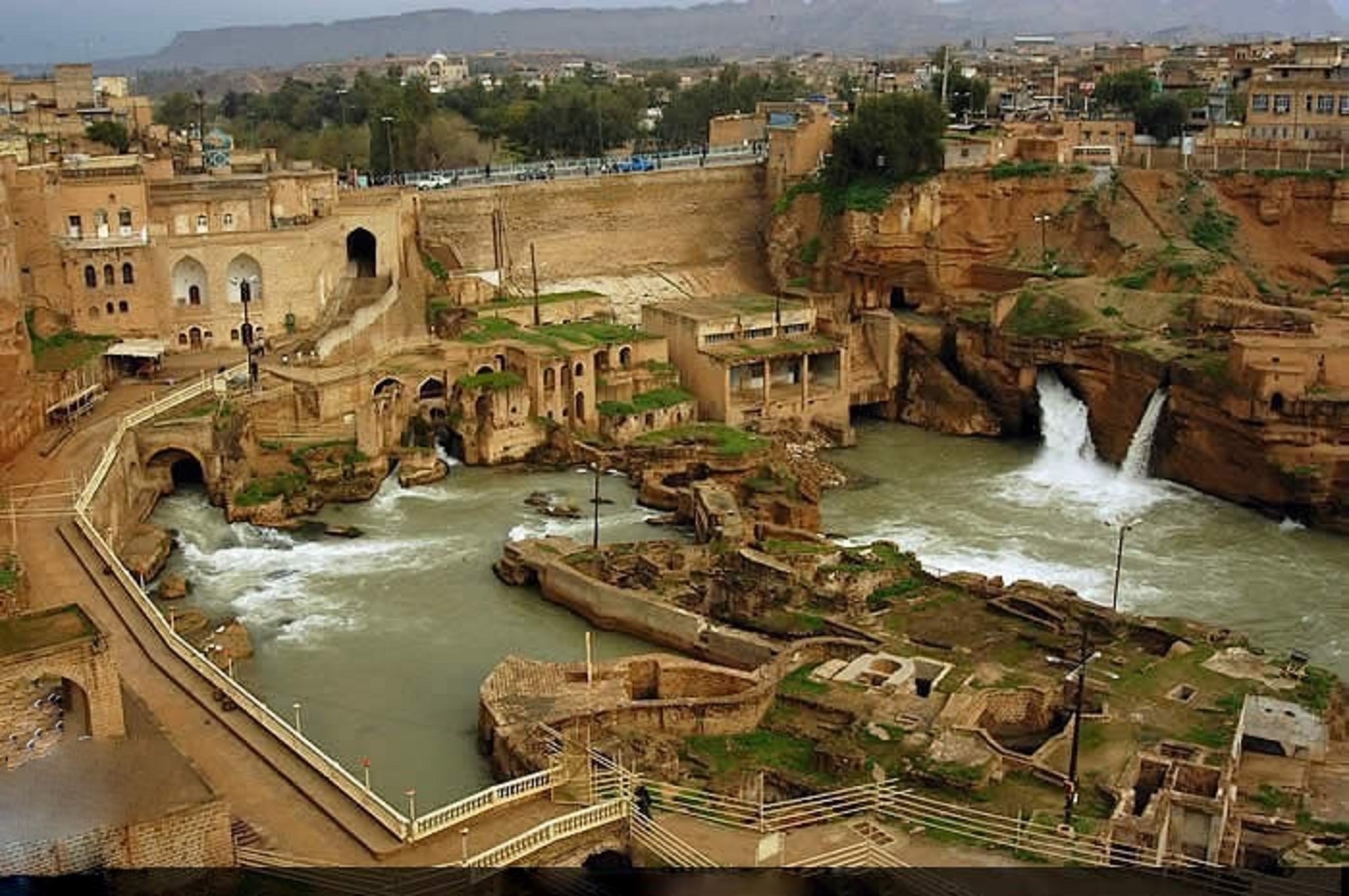
Shushtar Historical Hydraulic System
Uncategorized / October 23, 2019 / mahboobe firoozShushtar Historical Hydraulic System is the tenth UNESCO world heritage site of Iran. Its location is in Khuzestan Province. It is an interconnected set of huge bridges, canals, mills, waterfalls, and tunnels that registered in UNESCO at 2009. They were built to more use of water during the Achaemenid and Sassanid Era. Jane Dieulafoy, the famous French archeologist, knows it as the largest industrial complex before The Industrial Revolution In her travelogue. It is a technical masterpiece in the world due to time of instruction. This engineering feat is unique in both Iran and the world.
The basis of the work is that the Gargar Dam blocked the river. It raises the surface of the water to dewater three tunnels dug in the boulder. Triple tunnels lead the water to the complex. They divide into several channels. After turning the mills wheel, the water flows into a pond-like area. The beautiful and unique visual feature to this collection is that the water from the mill effluent pours into a pond-like enclosure in beautiful artificial waterfalls. It creates a pleasing and eye-catching view of every viewer. Another its most prominent feature is its proximity to the historical context of the city.
Shooshtar the City of Water Mill
Shooshtar the city of Water Mill backs to four thousand years before Christ. Its name was Hidalo in the millennium BC. We can consider Shooshtar city as the museum of water structures and buildings. These buildings are interdependent in terms of performance. That,s why it is a unique city around the world. This city had a special reputation in the Elamite period for its proximity to the Choghazanbil Temple. The foundation of its Hydraulic Systems was during the Achaemenid period . Shushtar was the capital of the local rulers of Khuzestan during the Parthian period. And it was one of the important centers of Khuzestan during the Sassanid era.

